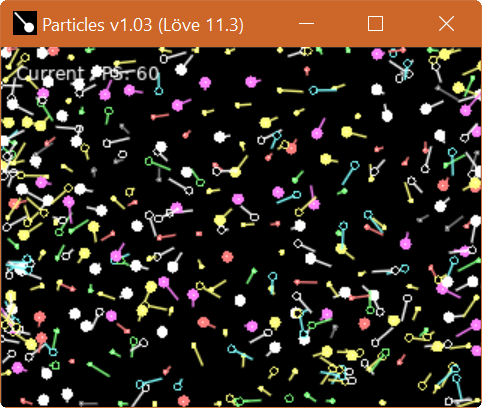Germanunkol wrote: ↑Tue Nov 17, 2020 5:54 pm
Would you care to share what the "more complex rules" are?
All particles have same mass by this simulation. See Gravity simulation for various masses:
https://love2d.org/forums/viewtopic.php?f=14&t=89764
This rules are not mine, just my implementation of them;
There is 3x9 = 27 types of particles:
Main types A, B, C:
The A attracts to another A.
B has no reaction to another B.
C repels from another C.
There is 9 types of As:
A1 attracts B and C;
A2 attracts B, but no reaction to C;
A3 attracts B, but repels C.
A4 has no reaction to B, but attracts C;
A5 has no reaction to B and C;
A6 has no reaction to B, but repels C.
A7 repels B, but attracts C;
A8 repels B, but no reaction to C;
A9 repels B and C.
Same rules for B1-B9, C1-C9.
The attraction for A will be colored as red 255;
No reaction to A will be colored as red 191;
The repulsion from the A will be colored as red 127.
Same: Reaction B as green color channel, reaction to C as blue color channel.
Thanks for flocking, but it doesn't work on Löve 11.3.
New version just with 135 partickles:
